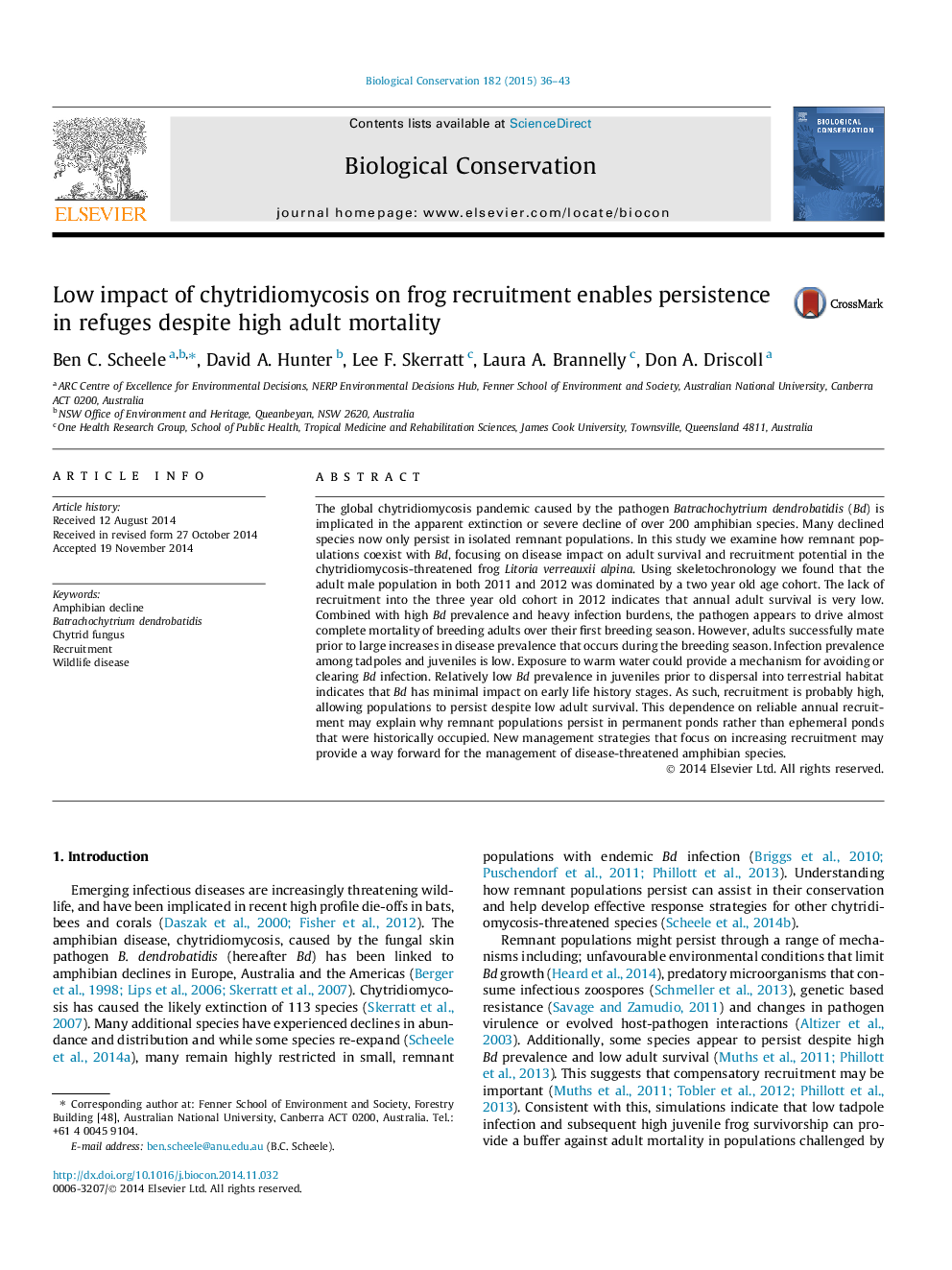| Article ID | Journal | Published Year | Pages | File Type |
|---|---|---|---|---|
| 6299288 | Biological Conservation | 2015 | 8 Pages |
Abstract
The global chytridiomycosis pandemic caused by the pathogen Batrachochytrium dendrobatidis (Bd) is implicated in the apparent extinction or severe decline of over 200 amphibian species. Many declined species now only persist in isolated remnant populations. In this study we examine how remnant populations coexist with Bd, focusing on disease impact on adult survival and recruitment potential in the chytridiomycosis-threatened frog Litoria verreauxii alpina. Using skeletochronology we found that the adult male population in both 2011 and 2012 was dominated by a two year old age cohort. The lack of recruitment into the three year old cohort in 2012 indicates that annual adult survival is very low. Combined with high Bd prevalence and heavy infection burdens, the pathogen appears to drive almost complete mortality of breeding adults over their first breeding season. However, adults successfully mate prior to large increases in disease prevalence that occurs during the breeding season. Infection prevalence among tadpoles and juveniles is low. Exposure to warm water could provide a mechanism for avoiding or clearing Bd infection. Relatively low Bd prevalence in juveniles prior to dispersal into terrestrial habitat indicates that Bd has minimal impact on early life history stages. As such, recruitment is probably high, allowing populations to persist despite low adult survival. This dependence on reliable annual recruitment may explain why remnant populations persist in permanent ponds rather than ephemeral ponds that were historically occupied. New management strategies that focus on increasing recruitment may provide a way forward for the management of disease-threatened amphibian species.
Related Topics
Life Sciences
Agricultural and Biological Sciences
Ecology, Evolution, Behavior and Systematics
Authors
Ben C. Scheele, David A. Hunter, Lee F. Skerratt, Laura A. Brannelly, Don A. Driscoll,
